Watch Out for These Tough Potato Diseases
Recognizing yield-robbing potato diseases early in the season requires regular scouting and preventive measures.

Potatoes are susceptible to a variety of diseases throughout the growing season, including Rhizoctonia, Verticillium wilt, early blight, white mold and late blight. These pathogens don’t always make their presence known right away, and letting these diseases go untreated can cause stunted growth, weakened roots and decreased crop yield.
Rhizoctonia
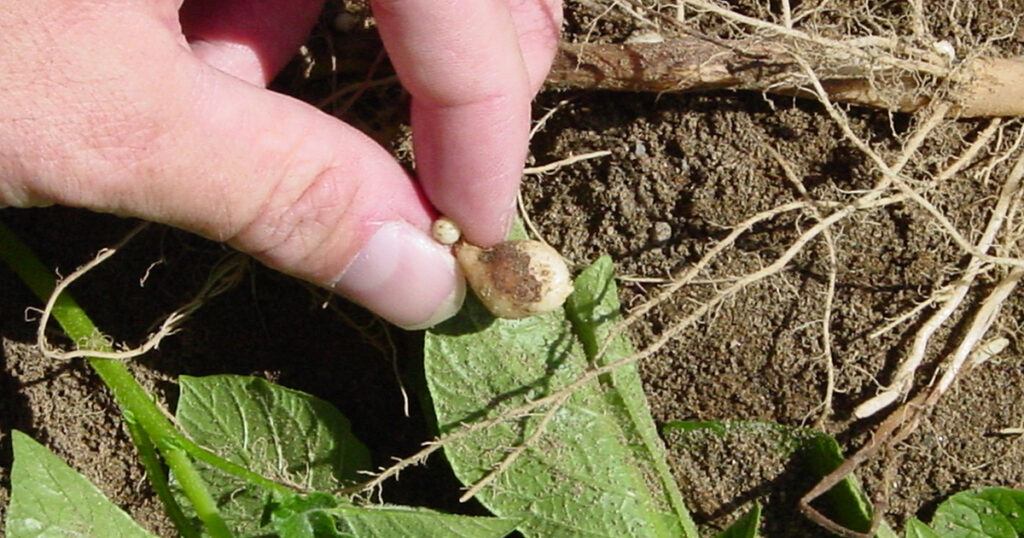
When potato crops are infected with the soilborne pathogen Rhizoctonia solani, the most noticeable indicator is the appearance of hard, black growths on tubers, a symptom of a disease known as black scurf. This disease overwinters in soil and infects potato seedlings early in the season when weather is still cold and wet. Additional symptoms include reddish-brown or brown sunken lesions on sprouts, stolons and young stems which can then lead to the black, hardened masses on tubers, resembling dirt that doesn’t wash off.
Verticillium Wilt
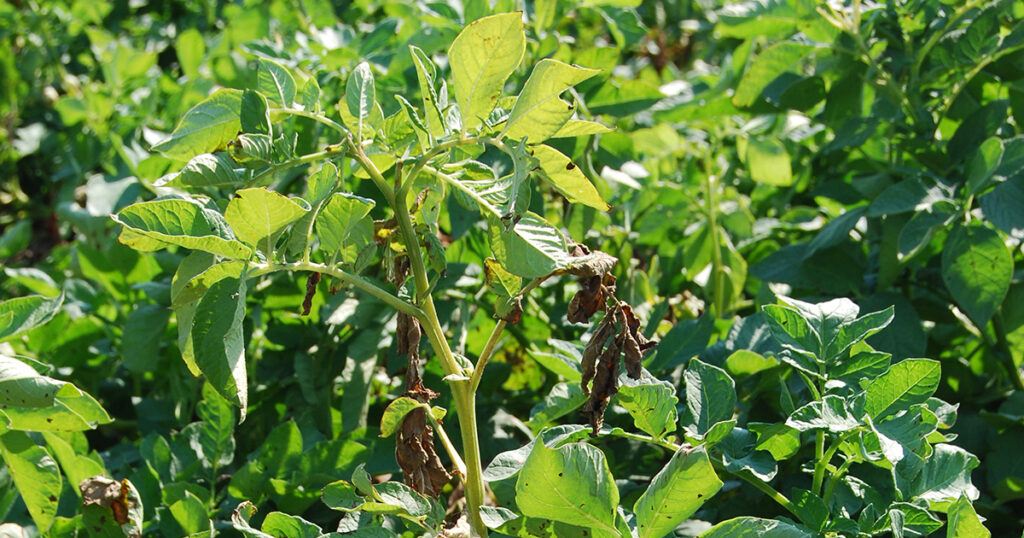
Verticillium wilt is caused by two soilborne fungi, V. dahlia and V. albo-atrum, and is a key component in a complex of pests that causes potato early die (PED). Distinguishing Verticillium wilt from normal plant senescence can be difficult. Early symptoms may be limited to uneven chlorosis of older leaves on plants throughout the field. More identifiable symptoms include wilting leaflets, yellowing of leaves and chlorosis progressing upwards. The University of Maine reports that wilting leaflets on one side of a petiole is an excellent diagnostic characteristic. Symptoms can also appear in tubers as brown or black discoloration.
Early Blight
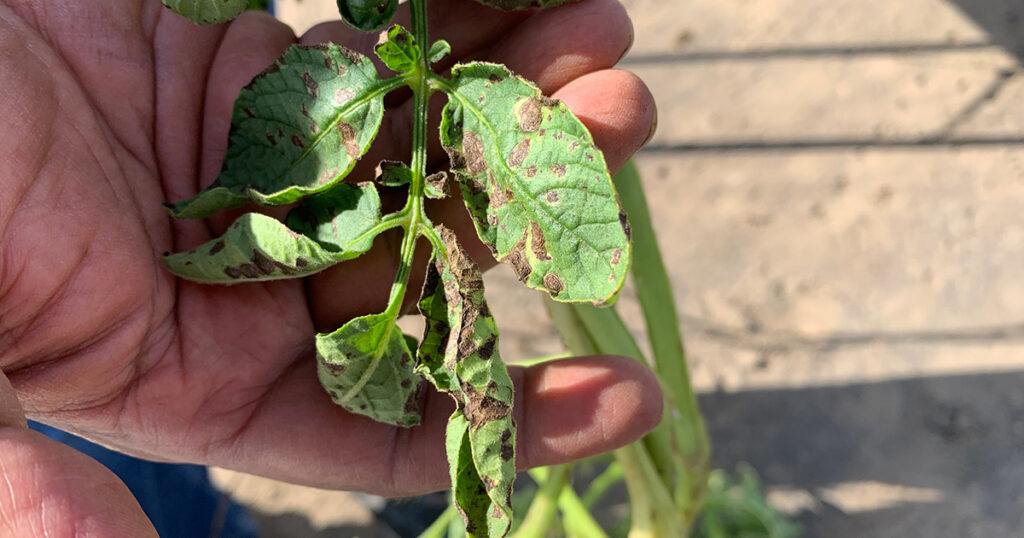
Initially, early blight in potato crops can be identified by small dark spots that can grow up to .5” in diameter. These spots form on older foliage near the ground and have a round and brown appearance. The University of Idaho reports that as these spots continue to grow, they develop target-like concentric rings, and the tissue surrounding the diseased area turns yellow. If left untreated, severely infected leaves turn brown and fall off, whereas dead, dried leaves may cling to the stem.
White Mold
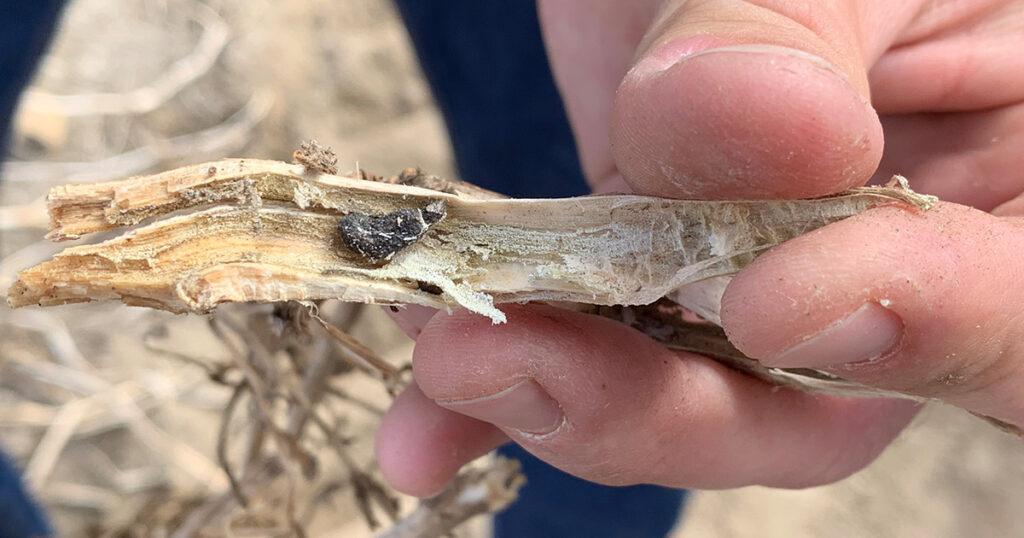
Sclerotinia stem rot, also known as white mold, thrives in high moisture areas and moderate temperatures. If this fungus begins to grow on healthy potato stems or leaves, water-soaked white, cottony lesions can grow and quickly spread. At first, these lesions can be found at the intersections of stems and branches or where stems and branches meet the soil. In plants that are severely infected, hard, black, irregularly shaped masses (about 0.25-0.5” in diameter) develop inside dying potato stems.
Late Blight
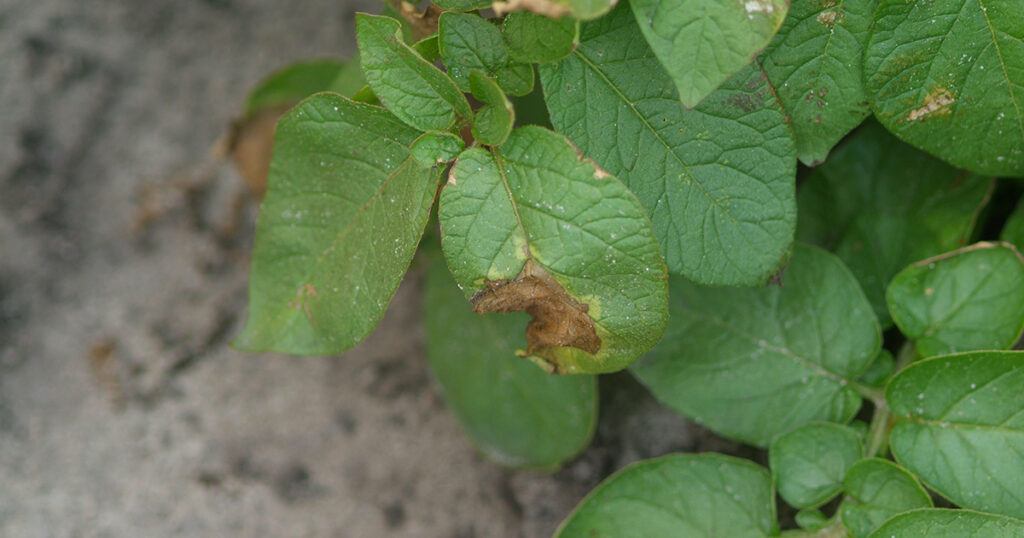
Late blight can first be seen on the younger leaves of potato plants. This disease leaves large, dark brown lesions with a green-gray edge. During cool, moist weather, these lesions can rapidly expand into dark brown or black spots. According to Michigan State University, infections that appear in tubers are irregularly shaped, slightly depressed, brown to purplish areas on the skin, which can be difficult to spot on russet and red-skinned potatoes. Under the potato skin, a dry, granular rot that is tan to reddish-brown in color can be found in the discolored area. This rot can extend up to .5” into the tuber.
Scouting regularly for disease symptoms coupled with planting potato varieties with disease resistance are two ways to fight off these difficult to control diseases. An additional preventive measure that you can take is to plant seeds that are treated with CruiserMaxx® Vibrance® potato seed treatment. An in-furrow application of Elatus® fungicide may also help control Rhizoctonia and suppress verticillium wilt. During the growing season, an application of Miravis® Prime fungicide can help control these quick-spreading pathogens.
3 Min Read
- Scouting regularly is necessary to recognize quick-spreading diseases before it’s too late.
- Planting resistant varieties and using potato seed treatments like CruiserMaxx® Vibrance® help manage disease from the start.
- Elatus® and Miravis® Prime fungicides help protect potatoes from yield-robbing diseases.























